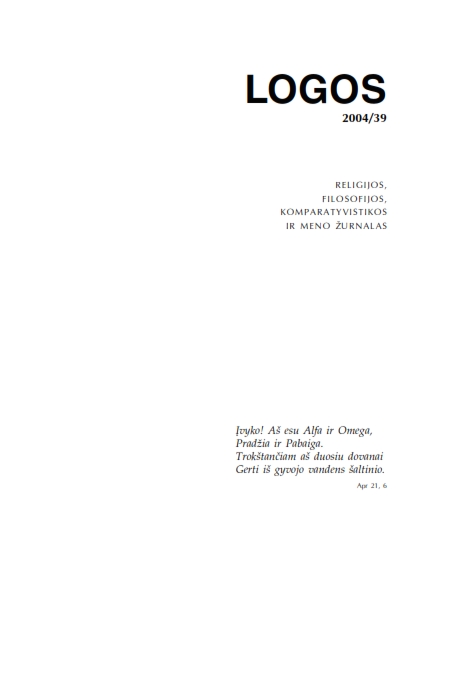Lietuvos ir Lenkijos dailės istorijos užuomazgos 1831-1863 m.
The Development of the History of the Lithuanian and Polish Arts (1831-1863)
Author(s): Atėnė KašinskaitėSubject(s): Cultural history, Aesthetics, 19th Century, History of Art
Published by: Visuomeninė organizacija »LOGOS«
Keywords: History of art; J. I. Kraszewski; F. M. Sobieszczanski; J. K. Komornicki; national school of art;
Summary/Abstract: The first attempts to evaluate the country’s artistic heritage and to submit a systemized survey of the Country’s architectural evolution were made in the Lithuanian and Polish scientific world. The patriotic aspiration to collect and to preserve historic monuments, testifying to the history of the State which had lost its independence, and the changes which had been going on in historiography in Western Europe, as well as the new ideas in the philosophy of art, stipulated the need to reflect the country’s own history of art. The standpoint towards works of art of previous times, which was shaped in the scientific society of those times, is discussed in the article. Besides, attempts to reveal how the evaluation of the country’s artistic heritage changed, starting from the conviction that the national character is not distinguished by its artistic capabilities and ending with the acknowledgement that a certain part of this heritage is worth attention from an artistic point of view, were made. The first general work by F. M. Sobieszczanski “Knowledge about the Fine Arts in Ancient Poland” and the evaluation in publications of those times revealing how researchers had been perceiving the problems of the reflection of the history of art, and which history of art of their own country, as scientific work, was needed by them, were analyzed. Sobieszczanski reflected the country’s evolution of art against the background of the social and political history of the Lithuanian and Polish states. However, J. I. Kraszewski evaluated the scientist’s work only as the chronological summary of monuments of art, which is not distinguished by an overall philosophical standpoint, as the country’s history of art has to reflect the evolution of the progress and development of different branches of art and to reveal the original, purely national, features of art.
Journal: LOGOS - A Journal of Religion, Philosophy, Comparative Cultural Studies and Art
- Issue Year: 2004
- Issue No: 39
- Page Range: 183-193
- Page Count: 11
- Language: Lithuanian

